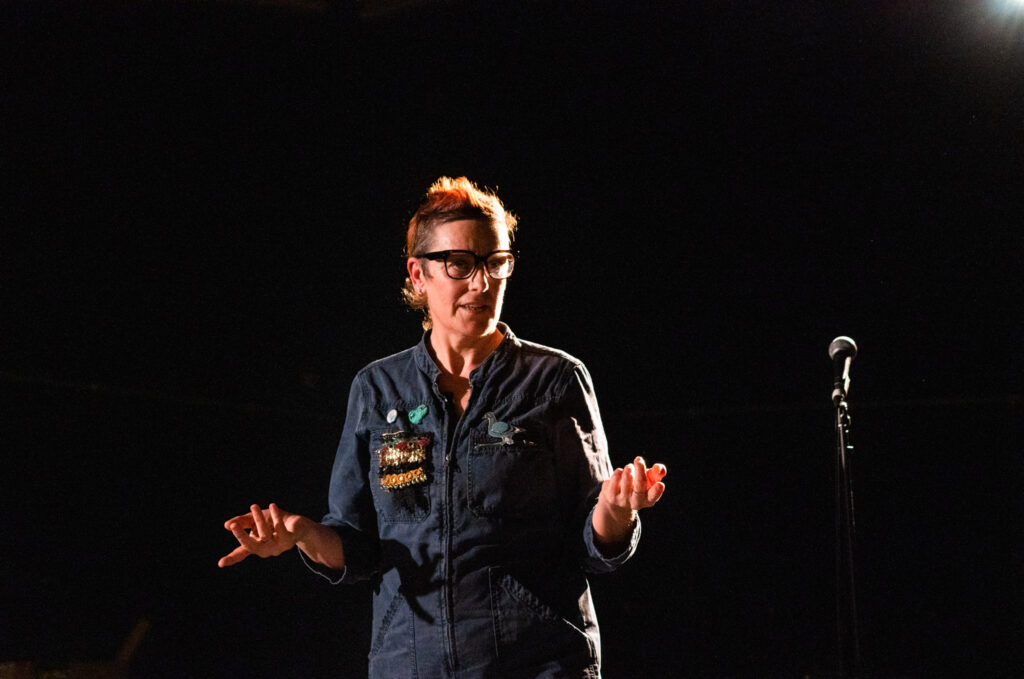Harold Carter and John Aitchison find there are now more Welsh speakers in Cardiff than Ceredigion
The release of the first returns on the Welsh language at the 2011 census has caused both anguish and dismay. The 2001 census was thought to have marked a distinctive turning point where over a century of decline had been transformed into modest gains, a reward it seemed for the investment of effort and finance into linguistic regeneration. But the decade since has failed to build on that historic turn around and decline and fall have again set in.
|
Future of the Language On Sunday: Rhodri Talfan Davies examines the role of Radio Cymru. |
Between 1991 and 2001 the number of speakers increased by just over 13 per cent, from roughly 508,000 to around 580,000. Ten years on the picture is surprisingly different. The surge in numbers has been halted, with a decrease to 560,000 people indicating that they can, though not necessarily do, speak the language. This represents a decennial fall of 2.2 per cent. Undoubtedly, the most worrying aspect of the recent data is the four areas of the country which recorded losses:
- The rural heartland of the north and west, what was once called ‘Y Fro Gymraeg’.
- Swansea and its hinterland.
- The old central coalfield area of Merthyr Tydfil and the Rhondda.
- The industrial parts of the north-east, around Wrexham and Flint.
By far the most critical of these areas, and the one to which most attention has been directed is the rural heartland. Of course, it can be argued that the results were not unexpected. In A Broken Heartland and a New Beginning, an analysis of the 1991 census (in Planet 97), we drew attention to a serious collapse and fragmentation in Welsh as a community language within these parts, especially marked by the decline in the number of those communities where over 70 per cent spoke Welsh and where it could therefore be regarded as a thriving mode of every day communication.
Those earlier studies were based on detailed analyses at the community level. However, the cruder 2011 data would suggest that the processes then operative have continued. Between 2001 and 2011 Ceredigion and Carmarthen in particular showed significant falls in absolute numbers of over six per cent. It is distressing to record a fact which is the most telling of all, that for the first time the Welsh-speaking populations within these authorities are no longer in the majority. There are now more Welsh speakers in Cardiff than Ceredigion. Gwynedd and Ynys Mon showed more resilience but even in those authorities losses were recorded.
At this point it is appropriate to turn from the narration of facts to an interpretation where an explanation of language loss can be found. In simplest terms the point at which any good or service is offered is determined by two controls. The first of these is the threshold population. This is the minimum population required to make the offering economically viable. Put crudely, there is a Marks and Spencer in Cardiff not in Aberystwyth because the capital city can provide the threshold population that Aberystwyth cannot. It is possible to make these measures much more sophisticated, for example by introducing a multiplier on average earnings to give an estimate of spending power available in the town and region. But for present purposes we can use the simple basis of population.
The second control is range, or the distance over which people are prepared to travel to gain access to the good or service. At some point the distance becomes either too expensive or too inconvenient. People will refuse to travel and the offering is outranged. Again sophistication can be introduced by adding a consideration of time taken rather than simple physical distance.
Leaving aside all the elaborations possible, it remains the case that threshold population and range remain the two essential controls of location. One modification needs to be added. Population numbers are as applicable to service as to commercial activities, but in service terms the interpretation of range must be adjusted to the distance people can be expected to travel.
The above discussion might seem remote from language issues but it is fundamental to them. In times of economic difficulty the planning response is unequivocally placed on threshold numbers. Moreover, the providers of services can ignore range, for the costs and inconveniences of travel are not borne by the providers but by the consumers.
The result is that economies of scale and accompanying centralisation determine the way services are provided. This has meant widespread closures of shops, pubs, schools, magistrate courts, leisure centres and swimming pools and especially medical services. The removal of such critical services inevitably weakens the viability of rural communities, encourage the emigration of the young and active, and hence lead to language loss. It is in this context that the struggle for the future of the language has to be located rather than in campaigns over rights and notions of equality.
Concern has been expressed over the use of Welsh in the National Health Service. That is all well and good. But to the population of these rural areas the issue is not the language used but the effective provision of crucial hospital services. The reducto ad absurdam in National Health Service terms is that the assemblage of the finest group of specialists is of no value whatsoever if I am dead on arrival. In language terms it translates to the point that the status of Welsh will matter little if there is no one left to speak it.
It must be added that measures to offset these problems face great difficulties. Large scale capital projects (Wylfa excepted) are very unlikely given the present state of the economy. In any case, they tend to increase the immigration of non-Welsh speakers. Small and medium size businesses face a formidable range of difficulties, foremost among them remoteness and a totally inadequate transport infrastructure. In thinly peopled areas which are losing services it is difficult to assemble and maintain an effective reservoir of skills.
Some agriculturally based enterprises, in dairy and meat products, have been very successful. But here, too, there have been problems and the movement of production to larger more accessible sites is an all too familiar story. In short, the economic means for sustaining of rural communities are weak and seemingly declining.
The loss of Welsh speakers in Swansea and its hinterland is equally disturbing. In Swansea itself there was only a slight decline between 1991 and 2001 in the percentage of Welsh speakers, from 13.3 to 13 .2 per cent. But it accelerated in the succeeding decade, falling to 11.4 per cent. This is not easy to explain for Swansea is a city with apparently all the advantages of Cardiff or Newport. Moreover, it has been one of the bastions of the language and there have been significant efforts to sustain the language both in the city and its hinterland. Accordingly there would be a presumption for growth parallel to that at Cardiff. Yet whereas Swansea returned 27.9 per cent speaking Welsh in 1911 and Cardiff only 6.7, the comparative figures one hundred years later are 11.4 as against 11.1 (it should be noted that the areas of the County Boroughs in 1911 were quite different from those of the present Unitary Authorities).
The reasons for the loss in Swansea are not easy to elucidate. Maybe the city has not benefited from the influx of Welsh speakers associated with government and the media which has characterised Cardiff. It is significant that in the age group 3-14 there are 32.8 per cent speakers in Cardiff, but only 28.5 per cent in Swansea – an indication perhaps of a lack in Swansea of the young Welsh-speaking in-migrant families which are associated with the capital’s administrative functions. It is possible to maintain that this area, possibly extending westward to include Llanelli and its environs, represents a throwback to the conditions which over much of the last century resulted in language loss. Whatever the explanation, it is little short of disastrous that this metropolitan area has to be added to the rural heartland when the decline of the last decade is assessed.
The third area we noted is Merthyr and Rhondda Cynon Taf. Those authorities recorded virtual stability. There was no change in the Rhondda and Merthyr showed a small decline from ten per cent to just under nine per cent. Here the explanation must lie in the economic problems which have beset the area. There was probably very little in-migration of non-Welsh speakers to these old industrial regions to translate the situation into one with tangible decline in proportion. Nor does there seem to have been any real movement in the opposite direction of locally-based increase. The result is a depressing stalemate with little movement in either direction.
The final area is the north-east. In Wrexham the percentage of speakers fell from 14.4 to 12.9 per cent and at Flint from 14.1 to 13.2 per cent. In an odd way, given what has been written earlier about economic decline, it is probably economic growth which contributed to these changes. The continuing growth of Broughton has been one of the real centres of development in Wales. Moreover there is a great contrast with the equivalent region in southern Wales, around Cardiff. There is no parallel draw for Welsh speakers to jobs created by a Welsh administration. In contrast the area is within the urban hinterland of Chester and, more importantly, of Liverpool, and indeed Manchester. In a sense its loyalties are directed across the border. All this generates a condition where a strong basis for language increase is unlikely.
This analysis is circumscribed by the coarse level at which the data is available. Modification or qualification may be necessary when the small area statistics are published. It also should be noted that, as always with census data, questions of reliability have been raised, especially where results do not fit preconceived ideas and confound expectations. As with all questionnaire surveys, there are legitimate criticisms, but this review is based on comparisons over a census decade, and it is unlikely that any shortcomings would have changed over that period. The problems of data reliability in 2011 are surely the same as those in 2001.
It has also been suggested that the data are so unreliable as to be unworthy of analysis. To that there is really no answer other than that the census is the only survey that does not rely on sampling and rejection leaves no room at all for objective enquiry. In artistic terms there may be room for impressionism as against the reality of the photograph, but in social enquiry the objective reality of the photograph is much to be preferred.
Our core conclusion is that whereas in the immediate past the growth in the south and east outbalanced the decline in the old heartlands that balance has now been reversed. Growth in those southern and eastern parts now seems to have reached a plateau. The number of Welsh speakers in Cardiff advanced by only 0.2 percentage points. Meanwhile, decline in the heartland, which was identified at the last census, has now surfaced and been clearly revealed. To this has to be added the failure of the area about Swansea Bay to show gains.
For policy makers the message is not an easy one to accept, that all the efforts over status and equality may be of little ultimate effect if the core areas of the language continue to show no economic dynamism and where bureaucracy sees the future as totally conditioned by the exigencies of threshold populations.






Comments are closed.